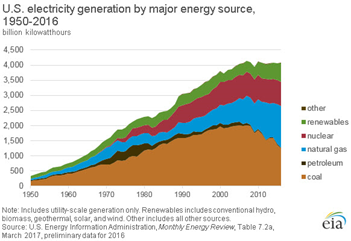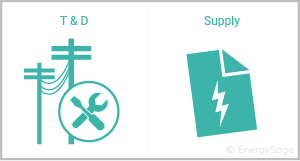What are pressurized water reactors and their characteristics?
A pressurized water reactor (PWR) is a type of nuclear reactor used to generate electricity and power nuclear submarines and warships. They use hot water (normal water, except heavy water) as a coolant and neutron moderator. It is one of the three types of thermal reactors, the others are boiling water reactors and supercritical water cooling reactors. It was originally designed for the US Navy, but quickly became widely used in the nuclear power industry. and 297 in operation worldwide in 2018. This Frontier Utilities Rates makes it the most used in the world, and the second (boiling water reactor) has only 80 in operation.
Their use in warships and nuclear warships is very important to various militaries around the world. Nuclear power has a major advantage over fossil fuels such as gasoline or diesel because it allows ships to operate for long periods without the need to refuel. PWRs make good reactors for these ships because they have a high capacity (high power for their size) due to the use of high pressure. This allows reactors to be very compact, especially when using highly enriched uranium.
Features
Gasoline
Pressurized water reactors will use enriched uranium as nuclear fuel, due to their use in heating water. Of course, hot water will absorb more neutrons if natural uranium is used, so the fuel yield of fissile uranium 235 will increase. This is done through the process of uranium enrichment, in which the concentration of uranium-235 is increased from 0.7% to about 4%.
Enriched uranium is stored in oil rods that are assembled in oil packages. There are about 200-300 rods in each package for a PWR, and large reactors have 150-250 packages in their core. This corresponds to about five cubic meters of uranium or 80 to 100 tons of uranium. The bundles are arranged vertically in the fuel tubes inside the head. As the fuel “burns” in the reactor, its density gradually increases, causing small holes to form inside the fuel tube. These voids can cause problems as high pressure can cause the tubes to harden, increasing the risk of bursting. To avoid this problem, the tubes are filled with helium at about 3.4 MPa. As fission gas products accumulate over the life of the oil, the pressure gradually builds up to a higher pressure of the core.
Coolant and regulator

As mentioned earlier, hot water is used as a heat source and a regulator for the working water generator. Warm water is more abundant than heavy water, as it is 99.99% of normal water. Hot water does not make a good conductor like heavy water or graphite because of its high neutron absorption. However, using it as an organizer is an important safeguard; If there is a loss of coolant emergency (LOCA), there will also be a controller that stops the nuclear chain reaction. Also, if the moderator water overheats and becomes steam in the bottom of the reactor core, there will be less moderator, and how the chain reaction will stop.
Pressure, Temperature, and Water
The water in the reactor is pressurized. This is because as the pressure increases, the boiling point of the water increases in it. This means that at higher pressures, water can work at higher temperatures than vapor. Water enters the reactor at 290 ° C, and when it leaves, it is about 325 ° C. To be liquid at these temperatures, the pressure must be 15 MPa or something about 150 times the atmospheric pressure. The hot water from the reactor is distributed through U-shaped tubes that act as heat exchangers, reheating the water in a so-called “steam generator”.

